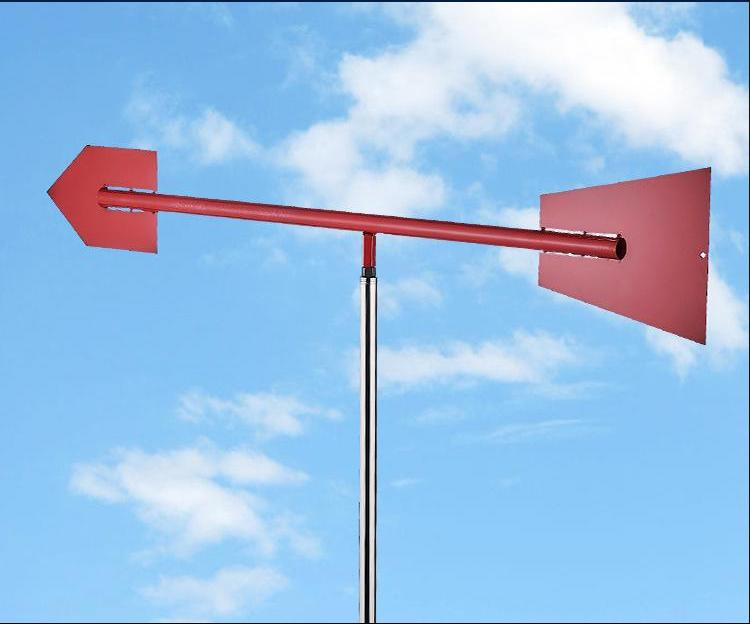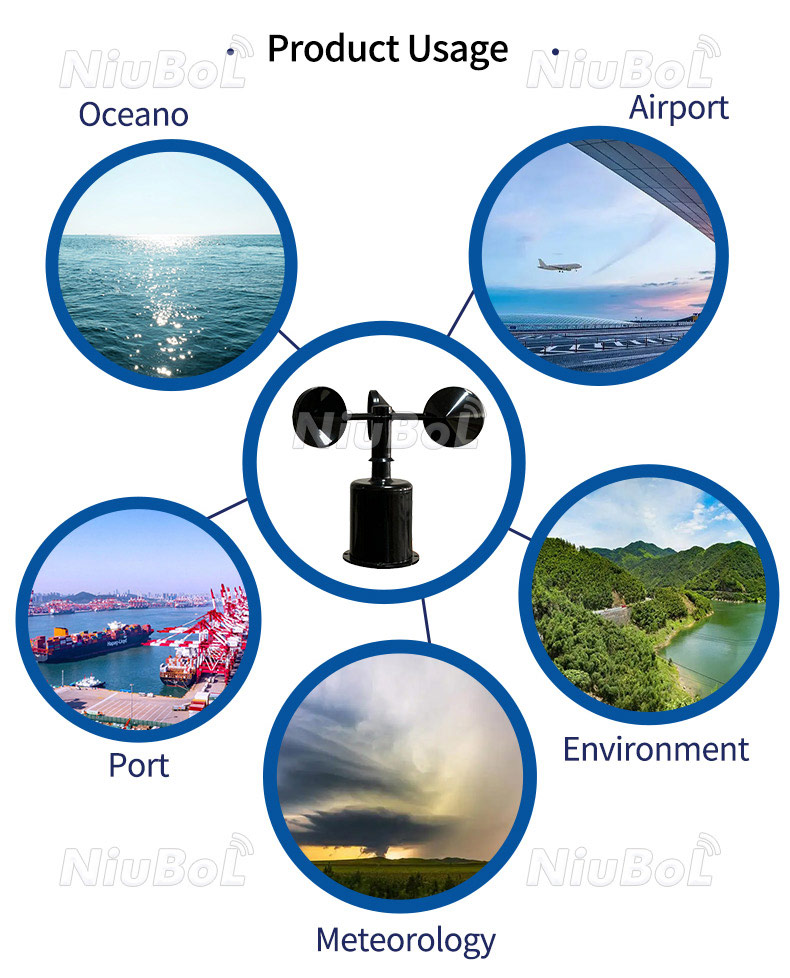

— Blogs —
—Products—
 Consumer hotline +8618073152920
Consumer hotline +8618073152920 WhatsApp:+8615367865107
Address:Room 102, District D, Houhu Industrial Park, Yuelu District, Changsha City, Hunan Province, China
Product knowledge
Time:2024-03-03 17:04:29 Popularity:2885
Wind speed measuring instruments, known as anemometers, are essential tools in meteorology, aviation, marine navigation, and various fields of engineering and environmental studies. They are designed to measure the speed and sometimes the direction of the wind. There are several types of anemometers, each with its unique mechanism and application. Here's an overview of the most common types:
1. Cup Anemometers
- Description: This is one of the most recognized types of anemometers. It consists of three or four cups mounted on horizontal arms, which are attached to a vertical rod. As the wind blows, it pushes the cups around in circles.
- Applications: Cup anemometers are widely used in weather stations and for basic wind speed measurements in various industries.
2. Vane Anemometers
- Description: Also known as windmill anemometers, these devices have a propeller and a tail on the same axis to orient the propeller into the wind. The wind speed is measured by the rotation rate of the propeller.
- Applications: Vane anemometers are used in meteorology, aviation, and by HVAC (Heating, Ventilation, and Air Conditioning) technicians to measure air speed within ducts.

3. Hot-Wire Anemometers
- Description: These anemometers measure wind speed based on the cooling effect of air flow over a heated wire. The electrical resistance of the wire changes as it cools, which can be translated into wind speed.
- Applications: Hot-wire anemometers are commonly used in research and development, particularly in aerodynamics, and for measuring turbulent air flows.
4. Sonic or Ultrasonic Anemometers
- Description: These devices measure wind speed by sending ultrasonic sound pulses between pairs of transducers. The time it takes for the sound to travel between the transducers changes with the wind speed, allowing for its measurement.
- Applications: Sonic anemometers are used in high-precision meteorological stations, wind turbines for wind energy assessment, and scientific research where accurate wind measurements are crucial.
5. Laser Doppler Anemometers and Lidar
- Description: These advanced anemometers use laser beams to measure wind speed. Laser Doppler anemometers analyze the Doppler shift in laser light reflected off airborne particles, while Lidar (Light Detection and Ranging) systems emit laser pulses and measure the reflection times from particles in the air.
- Applications: These technologies are used for precise measurements in atmospheric research, wind tunnel testing, and to assess wind profiles over large distances, such as for site evaluation for wind farms.
6. Weather stations: Traditional weather stations often include anemometers as part of their equipment to measure wind speed and direction.These are usually mounted on a tower to ensure they are placed above any obstructions.
7. Handheld anemometers: Portable devices that can be used for field measurements or in situations where a mounted anemometer is not feasible.

8. Shipboard anemometers: Specialized anemometers designed to be used on ships, taking into account the unique conditions of a moving platform and the presence of waves.

When selecting a wind speed measuring instrument, consider the following factors:
- Accuracy Requirements: Some applications require very high accuracy, while others do not.
- Environment: The measurement environment can dictate the most suitable type of anemometer. For example, sonic anemometers perform well in harsh weather conditions without moving parts that could freeze or malfunction.
- Measurement Range: Ensure the device covers the wind speed range you expect to encounter.
- Data Logging and Transmission Needs: Some applications may require remote monitoring and data logging capabilities.
- Budget: The cost can vary significantly between different types of anemometers and their features.
By considering these factors, you can choose the most appropriate wind speed measuring instrument for your specific needs, ensuring reliable and accurate wind measurements for your applications.
Related recommendations
Sensors & Weather Stations Catalog
Agriculture Sensors and Weather Stations Catalog-NiuBoL.pdf
Weather Stations Catalog-NiuBoL.pdf
Related products
 Combined air temperature and relative humidity sensor
Combined air temperature and relative humidity sensor Soil Moisture Temperature sensor for irrigation
Soil Moisture Temperature sensor for irrigation Soil pH sensor RS485 soil Testing instrument soil ph meter for agriculture
Soil pH sensor RS485 soil Testing instrument soil ph meter for agriculture Wind Speed sensor Output Modbus/RS485/Analog/0-5V/4-20mA
Wind Speed sensor Output Modbus/RS485/Analog/0-5V/4-20mA Tipping bucket rain gauge for weather monitoring auto rainfall sensor RS485/Outdoor/stainless steel
Tipping bucket rain gauge for weather monitoring auto rainfall sensor RS485/Outdoor/stainless steel Pyranometer Solar Radiation Sensor 4-20mA/RS485
Pyranometer Solar Radiation Sensor 4-20mA/RS485
Screenshot, WhatsApp to identify the QR code
WhatsApp number:+8615367865107
(Click on WhatsApp to copy and add friends)